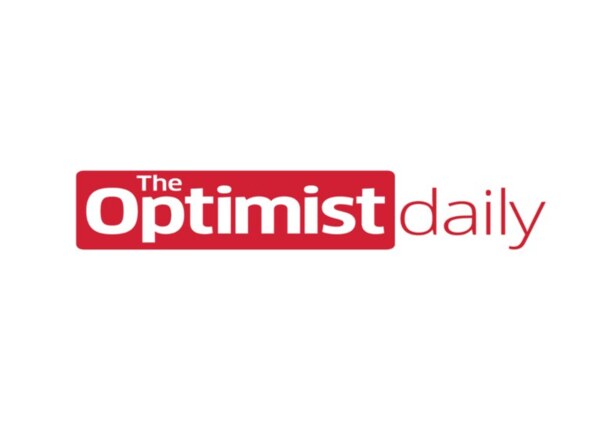Is it time to put the conventional meat industry to pasture?
BY LAUREN GOODMAN
When I was 10 years old, I made a bold decision, a decision that may have been before its time. I stopped eating meat and proudly labeled myself as Vegetarian. I was young, not even a teenager yet. My parents and foreign relatives were not thrilled about my transition—they did not understand why I wouldn’t eat what was put on my plate or how my young bones would develop without a steady source of protein.
Because I didn’t eat what my family provided, I spent my teen years teaching myself how to cook, and for many years my meals consisted of steamed vegetables and tasteless tofu with a side of rice. My school lunches were the same every day: a peanut butter sandwich, an apple, and some pretzels. It may sound bland, and that’s because it was.
Taking a big step forward at the age of fifteen, I cut all animal products out of my diet. I became the only vegan person at my high school, and probably the first vegan person many people had ever met. I faced judgment from more than just my family this time. People told me I was stupid and naïve, that my actions would never make a difference or whatever.
I didn’t care. What I was doing gave me purpose. My heart was filled by the fact that I could drive past a field of cows knowing they would never end up on my plate. I found peace in animal sanctuaries, where visitors are welcome to spend time with rescued farm animals. The first time I felt true compassion was the Thanksgiving holiday I spent with a large turkey purring in my lap.
Today, my diet is still the topic of conversation at most meals. While people’s comments on my food used to annoy me, I actually appreciate them now. It seems that the more common my strict lifestyle has become, the more people want to learn about it. I’ve climbed the learning curve over the years, and today that curve is much easier to reach. There are countless resources—books, online blogs, documentaries, nutritionists—that can help people plan vegetarian and vegan meals.
While I do not regret my early transition to a plant-based existence, I do find myself envying those who make the switch now. My boring meals of tofu and vegetables are trumped by what’s on the market today: milk coming from every possible plant, chicken crafted from soy or wheat, beef from peas. The list goes on. Teenage me had no idea where all of this would go, but today my perspective couldn’t be clearer. Animal products, especially meat, are not the future of food. Alternative products are. We have gotten to a point where we don’t have to give up our favorite foods to act ethically and environmentally. And in many cases, the newer alternatives mimic or surpass the flavors and textures of conventionally sourced animal products. That is the future of food.
The three overarching problems most commonly connected with the conventional meat industry are its detriment to human health, the ethically questionable treatment of animals, and the profoundly negative impacts on environmental well-being. But it may be the economic unsustainability at the core of the industry that ultimately spells meat’s downfall. Growing animals for food is just too darn expensive to keep doing for long.
Inefficiencies at scale
Animal agriculture is extremely inefficient. Providing only 18 percent of the total consumed calories worldwide, livestock covers over 80 percent of farmland. Meat, especially beef, is one of the leading consumers of freshwater. Beef cattle require 15,400 cubic meters of water per ton, followed by the 10,400 cubic meters per ton of sheep and 6,000 cubic meters per ton of pig.

In addition to the land area occupied by livestock, millions of acres of land are required to grow enough food to sustain the production of the animals. In the short 18 years between 1995 and 2013, the demand for corn for animal feed increased by 293 percent.
According to the Food and Agriculture Organization of the United Nations, 40 percent of food grown is fed directly to animals, and that number is expected to rise as the population rises.
And then there’s the concern over the rapidly changing climate. Trust me, if anyone loves cows, it’s me. They really are my favorite animals. But they are a leading cause of climate change. Livestock from the meat and dairy industries add over seven gigatons of carbon dioxide equivalent per year to our atmosphere through methane, a much more potent greenhouse gas than carbon dioxide, 23 times more potent. The methane released by the livestock industry is equivalent to 14.5 percent of the carbon dioxide put into the atmosphere by humans.
In addition to direct climate change, the meat industry, beef, in particular, has been clearly linked to the fires that engulfed the Amazon this summer. Brazil’s president, Jair Bolsonaro, has opened up the rainforest to business entities, promoting the cutting and burning of the forest to clear land for cattle ranching. Meat production, and thus planet destruction, is growing because of the increasing human demand for the products.
Growing appetites on a shrinking planet
Today’s planet is home to around 7 billion people, who each consume, on average, 43.5 kilograms of meat per year. That amount is much higher in the United States, reaching about 120 kilograms per year per person, making Americans the top meat consumers in the world. As populations around the world have more access to resources and money, they tend to consume more meat.
In Luxembourg, for example, the average annual income is around $70,000 per capita, and each person consumes about 100 kilograms of animal protein a year. But in China, where the average annual income is about $11,000, each person consumes 55 kilograms of meat each year, but this is growing rapidly as incomes in China grow.
We have an exponentially growing world population that is predicted to reach nearly ten billion by 2050. As the human population grows and as more and more people become wealthy enough to afford meat, the planet will not be able to support this level of meat consumption.
So what’s the solution?
The rapidly changing climate together with the pressure of a growing population is a huge problem for humanity, and it’s going to take a lot to fix it. And a big part of this will be a move to more vegetarian lifestyles. But how can millions and billions of people be convinced to start enjoying plant-based foods when we’ve all been taught that to be a rich, happy and healthy person there’s nothing as good as a juicy steak?

Ten years ago, I was eating soggy vegetables and bean curd daily because I loved animals. In 2018, 1.16 percent of the population was vegan—that’s around 600,000 people. Even better, 375 million people are vegetarians worldwide, and I have no doubt that this number will continue to grow. In part, people are starting to understand the extreme cons of meat-intensive diets.
But the only way to get the masses eating vegetarian is to make it cool, cheap and delicious. Well, that’s starting to happen!
Tyson: A Protein Company
The movement away from traditional meat production recently gained a huge victory as Tyson Chicken rebranded itself into a “protein company” rather than strictly a meat producer. The five largest meat and dairy producers, which include Tyson, are responsible for more greenhouse gas emissions than the major oil companies, including Shell and Exxon Mobil. Other large meat producers have quickly begun to follow in the footsteps of Tyson. They can see the future of protein is not based in just in chickens, cows or pigs.
 Tyson even debuted a new section of the company, Raised and Rooted, to offer plant-based proteins. The brand’s tagline is as follows: “Everyone deserves to eat well. That’s why we’re revolutionizing what plants can do in delicious and nutritious ways.” Music to my ears. While Tyson has vowed to continue selling traditional meat, they are beginning to understand the demand for alternative products. This is a huge step away from the traditional meat industry, as one of the largest meat producers encourages consumers to be open to new products– products that look and taste the same but have far less profound impacts on the world.
Tyson even debuted a new section of the company, Raised and Rooted, to offer plant-based proteins. The brand’s tagline is as follows: “Everyone deserves to eat well. That’s why we’re revolutionizing what plants can do in delicious and nutritious ways.” Music to my ears. While Tyson has vowed to continue selling traditional meat, they are beginning to understand the demand for alternative products. This is a huge step away from the traditional meat industry, as one of the largest meat producers encourages consumers to be open to new products– products that look and taste the same but have far less profound impacts on the world.
Beyond, Impossible, and Other Alternative Brands to Take the Lead
Rather than appealing solely to vegetarians and vegans, companies like Impossible and Beyond Meat are succeeding because they do a great job attracting meat-eaters. Based on plants, these products have great appeal because they are designed to taste, smell, and cook virtually the same as meat, and they could very well become the future of food.
Plant-based meats are appealing in part because of their smaller environmental footprint. Beef is calorically inefficient, requiring over 30,000 calories of feed to create 1,000 calories for humans. That same outcome uses over 400 gallons of water and 1,500 square feet of land, all while producing absurd amounts of methane. On the other hand, an alt-meat hamburger patty such as the Impossible Burger uses “87 percent less water, 96 percent less land, and produces 89 percent fewer greenhouse-gas emissions. Beyond Meat’s footprint is similarly svelte.”
Impossible, Beyond, Gardein, and other alternative brands are starting to make an impact worldwide. Some are sold in grocery stores and some are being made popular by chain restaurants, such as Beyond Meat which has been wildly successful at both Carl’s Junior and Del Taco.  Burger King recently debuted the Impossible Whopper, which has already become popular in the fast-food chain. As I write this essay, McDonald’s is testing its own version of an alt-meat burger. If North America’s fast food industry is killing it with fake meat burgers, who’s to say we will even miss those all-beef patties?
Burger King recently debuted the Impossible Whopper, which has already become popular in the fast-food chain. As I write this essay, McDonald’s is testing its own version of an alt-meat burger. If North America’s fast food industry is killing it with fake meat burgers, who’s to say we will even miss those all-beef patties?
Beyond Meat has also done very well since making its debut on the stock market. Since its IPO, the company has had a 160 percent rise, much higher than huge companies like Uber and Pinterest. Huge stars such as Kyrie Irving, a very well-known athlete, have been advertising for the alternative meat products as well. Beyond Meat is currently valued at around $10 billion, and it is clear that this is not only an environmental or ethical future solution but also an economic one.
The Up and Coming Player: Cultured Meat
Cultured meat, also known as lab-grown meat, is meat that is grown in laboratories from real animal cells. Sounds weird, right? Its novelty is part of its beauty, though. Just a few decades ago, the idea of online shopping was ridiculed. Who wanted to order clothes online when they could go to the mall? But look at Amazon today—an economic masterpiece. Cultured meat might sound crazy right now, but one day we’ll look back and wonder why we ever used such intensive resources and slaughtered living beings. Although cultured meat does use cells from an original animal, it is cultivated without the use of factory farms or slaughter. It’s also far more efficient, since only the parts that will be used for food are grown at all, so you don’t have to waste water or energy growing skin, hooves, bones or brains.
The leading five makers of cultured meat have just banded together to form the Alliance for Meat, Poultry, and Seafood Innovation. This group is taking the next step in lobbying for cultured meat to make it a reality for the future.
Alternative meats do not require large factory farms, and thus do not cause pesticides and animal waste to seep into the water. According to an environmental impact assessment conducted by Environmental Science and Technology, cultured meat has two main environmental impact mitigation potentials: “It reduces pressure for converting natural habitats to agricultural land,” and “it provides an alternative way of producing meat from endangered and rare species that are currently over hunted and overfished for food.” The study explored the early production stages of cultured meat. It addressed the fact that the product is still being developed while projecting its potential advantages and disadvantages alike. It found that the new product could lower energy use by 45 percent, greenhouse gas emissions by 99 percent, and land use by 96 percent. Additionally, alternative forms of meat can be more localized, further reducing the environmental footprint by minimizing the transportation of the products.
The Future of “Meat”
Ten-year-old me didn’t know the first thing about the negative effects of too much animal protein or how methane emissions and the inherent inefficiencies in raising animals for food impacted the planet. All I knew was I loved animals, and I wanted to act in a way that was consistent with my heart.
Conventional meat is economically, environmentally, and ethically unsustainable. Economically speaking, it’s also terribly inefficient. In the end, for a new product to succeed, it has to be better. When something is virtually the same as its competition, except it’s economically functional and guilt-free, who wouldn’t want that? If alt-meat can give consumers the exact same satisfaction as conventional meat without the disease-inducing, rainforest-destroying, cow-killing effects there’s no comparison. It may all sound weird today, but plant-based and cultured meat are probably where the meat, or ahem, the protein industry is headed.
About the Author
 Lauren Goodman is a Contributing Writer for the Optimist Daily and serves as Communications Coordinator at the World Business Academy. With a background in environmental science, she is very passionate about animal and environmental welfare, advocating to raise awareness about extreme issues that are prevalent in our everyday lives.
Lauren Goodman is a Contributing Writer for the Optimist Daily and serves as Communications Coordinator at the World Business Academy. With a background in environmental science, she is very passionate about animal and environmental welfare, advocating to raise awareness about extreme issues that are prevalent in our everyday lives.












